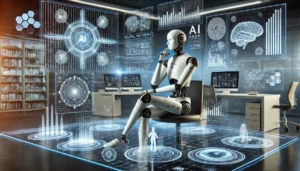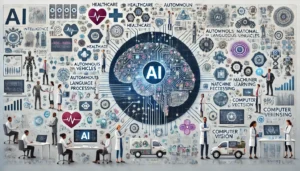If “Bharat Club 2024” is a local or specific organization you are interested in, you might find the most accurate information through these means:
Visit the official website: If the club has a website, it would be the most direct way to find information about its mission, activities, membership, and contact details.
Social media platforms: Check platforms like Facebook, Instagram, or Twitter, where many clubs are active and share updates, events, and other information.
Local community centers or bulletin boards: Sometimes local clubs post information in community centers, libraries, or online community boards.
Contact the club directly: If you have a phone number or email, contacting them directly could provide the most accurate and detailed information.

ABOUT US
Bharat Club 2024 sounds like an organization or group, but to provide a detailed “About 2024” section, I would need more specific information. Could you tell me more about the club? For instance:
- What is the main purpose or mission of Bharat Club?
- Where is it located and who can join?
- What kind of activities or events does the club organize?
- Are there any notable achievements or projects you’d like to highlight?
What is Artificial Intelligence?
Artificial Intelligence is a field of computer science that aims to create machines capable of performing tasks that would typically require human intelligence. These tasks include things like reasoning, speech recognition, visual perception, and language understanding.

Artificial Intelligence (AI) refers to the simulation of human intelligence in machines that are programmed to think like humans and mimic their actions. The term may also be applied to any machine that exhibits traits associated with a human mind such as learning and problem-solving. Here are some key aspects of AI:
Learning Processes: AI systems are capable of learning from data and experiences, adapting to new inputs, and performing human-like tasks. Common methods include machine learning, deep learning, and reinforcement learning, where systems automatically learn and improve from experience without explicit programming.
Reasoning and Problem-Solving: AI can process large amounts of data and make decisions through its ability to discern patterns and insights in the data. This capability is utilized in applications like medical diagnosis, stock trading, robot control, and more.
Perception: AI systems can interpret the world around them by recognizing objects, speech, and text. Computer vision and speech recognition are prominent examples of AI capabilities that allow systems to understand content in videos, images, or audio formats.
Manipulation and Interaction: Advanced robots equipped with AI can perform a variety of tasks such as moving through an environment or manipulating objects. Similarly, AI systems can interact with humans through Natural Language Processing (NLP), enabling them to engage in conversations and understand human languages.
Autonomy: AI systems can perform many tasks without human intervention. Examples include autonomous vehicles that drive themselves and smart assistants that manage your appointments.
Key Areas of AI
Machine Learning: This is the backbone of AI, where algorithms learn from and make predictions or decisions based on data. Machine learning includes deep learning, which uses large neural networks to analyze patterns in data.
Natural Language Processing (NLP): NLP involves the ability of a computer program to understand human language as it is spoken or written. It is what powers virtual assistants like Siri, Google Assistant, and, well, me—ChatGPT!
Robotics: This area of AI involves the design and manufacturing of robots that can perform tasks usually done by humans. Robotics combines elements of AI and mechanical engineering.
Computer Vision: Computer vision algorithms attempt to understand and interpret the visual world. Applications include image recognition, event detection, and facial recognition.

Artificial Intelligence (AI) encompasses a variety of key areas, each contributing to the development and application of intelligent systems. Here’s an overview of some of the most significant areas:
Machine Learning (ML): This is the backbone of AI, involving algorithms that allow computers to learn from and make decisions based on data. Machine learning includes supervised learning, unsupervised learning, and reinforcement learning.
Natural Language Processing (NLP): NLP enables machines to understand and interpret human language. Applications include chatbots, translation services, and sentiment analysis.
Robotics: AI in robotics involves creating robots that can perform tasks autonomously or semi-autonomously. This includes everything from industrial robots in manufacturing to personal assistants and drones.
Computer Vision: This field enables machines to interpret and understand the visual world. Computer vision applications include image recognition, video tracking, and pattern identification.
Neural Networks and Deep Learning: These are specific types of machine learning that use layered neural networks to analyze various types of data. Deep learning is particularly effective in areas such as speech recognition, image recognition, and NLP.
Cognitive Computing: This area of AI aims to mimic human brain functions to improve decision-making. It includes things like problem-solving and pattern recognition technologies.
AI Ethics and Safety: As AI becomes more pervasive, ethical and safety considerations are increasingly important. This includes ensuring AI systems are fair, transparent, and secure, and that they do not inadvertently cause harm.
AI in Healthcare: This rapidly growing field uses AI to provide more personalized, efficient, and predictive healthcare. Applications include diagnostic systems, robotic surgeries, and personalized medicine.
Autonomous Vehicles: AI is critical in developing self-driving cars and other types of autonomous vehicles. This involves a combination of machine learning, computer vision, and sensor technology.
AI-Enabled Security: AI technologies are used to enhance security systems, from cybersecurity solutions that predict and neutralize threats, to physical security systems that use AI-powered surveillance.
Ethical Considerations
As AI technology advances, it also raises important ethical issues:
- Privacy: As AI systems process vast amounts of personal data, ensuring this data is handled securely is crucial.
- Bias: AI systems can inherit and amplify biases present in the training data or algorithms. Addressing this requires careful design and testing.
- Job displacement: AI can automate tasks traditionally done by humans, leading to concerns about job losses and economic inequality.

Ethical considerations are fundamental principles that guide behaviors and decision-making processes, particularly in situations where actions can significantly impact individuals, society, or the environment. Here are some key ethical considerations often discussed across various fields:
Privacy and Confidentiality: This involves respecting the privacy rights of individuals and maintaining the confidentiality of their information. It’s especially relevant in sectors like healthcare, finance, and digital communications.
Transparency: Being open about actions, decisions, and processes. This is crucial in governance, business practices, and consumer relations to build trust and accountability.
Fairness and Justice: Ensuring that individuals are treated fairly and without discrimination. This includes promoting equality and diversity in workplaces, educational institutions, and in the application of laws.
Harm Principle: Avoiding actions that cause harm to others. This principle is central to ethics in medicine, research, and public policy.
Consent: Ensuring that individuals are informed and have voluntarily consented before involving them in research, medical treatment, or data collection. This is essential for respecting individual autonomy.
Responsibility: Acknowledging and taking responsibility for the impacts of one’s actions on others and the environment. This is key in environmental ethics, corporate social responsibility, and professional ethics.
Beneficence and Non-maleficence: These principles, particularly relevant in healthcare and research, focus on doing good and not causing harm. They guide professionals in making decisions that benefit patients or participants while minimizing potential harm.
Sustainability: Making decisions that do not deplete resources or harm the environment in ways that restrict the options of future generations. This is increasingly significant in business, urban planning, and environmental policy.
Conflict of Interest: Managing situations where personal interests could influence, or appear to influence, one’s professional judgment. This is important across all fields to ensure decisions are made based on the best available evidence and unbiased judgment.
Future of AI
The future of AI promises significant advancements and changes in various sectors including healthcare, transportation, and education. However, managing these advancements responsibly to maximize benefits while minimizing risks is a significant challenge for humanity.

The future of artificial intelligence (AI) is a topic rich with possibilities and subject to much speculation and research. As AI technology evolves, it’s expected to significantly impact various aspects of our lives, industries, and the global economy. Here are some key areas where AI is likely to have a profound influence in the future:
Automation and Robotics: AI will continue to drive automation in manufacturing, logistics, and even services. This will increase efficiency but also raise challenges around workforce displacement and the need for re-skilling.
Healthcare: AI is set to transform healthcare by improving diagnostics, personalizing treatment plans, and managing patient care through intelligent systems and devices.
Transportation: Autonomous vehicles, including cars, trucks, and drones, will likely become more prevalent. AI will play a critical role in navigating, traffic management, and logistics.
Environment: AI can help tackle environmental challenges by optimizing energy usage, monitoring climate changes, and aiding in the conservation of natural resources.
Finance: AI is already used in algorithmic trading, fraud detection, and risk management. Future developments might bring more sophisticated financial advisory services and enhanced security measures.
Education: Personalized learning experiences tailored by AI could become the norm, with systems that adapt to individual learning speeds and styles to optimize student outcomes.
Ethics and Governance: As AI becomes more capable, ethical considerations will grow in importance. Issues such as privacy, surveillance, decision-making in critical scenarios, and the mitigation of bias in AI algorithms will require robust legal and ethical frameworks.
AI and Creativity: AI is beginning to assist in creative processes like music production, writing, and art. This trend could expand, blending human creativity with AI’s capabilities to produce new forms of art and literature.
General AI: While most current AI systems are ‘narrow’ (specialized to perform specific tasks), the pursuit of General AI—systems that can understand and learn any intellectual task that a human being can—is a long-term goal. Achieving this could potentially lead to exponential advancements in solving complex problems.
Mission

Business Mission Statement
In business, a mission statement is a short declaration of an organization’s core purpose and focus that normally remains unchanged over time. It serves to guide the actions, spell out its overall goal, provide a path, and guide decision-making. It provides “the framework or context within which the company’s strategies are formulated.”

A business mission statement defines the core purpose of a company, clarifying its direction and guiding its decision-making processes. It’s a crucial element that communicates to stakeholders—employees, customers, and investors—what the business stands for and its primary goals. Here are some key elements to consider when crafting a business mission statement:
Core Purpose: Clearly state the reason your business exists. This should go beyond making money to describe the value you provide to your customers or the problem you solve.
Target Audience: Specify who your customers are. Understanding your audience can help tailor your mission to meet their needs more effectively.
Products or Services: Mention what you offer. This helps people understand what your business does at a glance.
Differentiation: Highlight what makes your business unique from competitors. This could be your innovative approach, superior service, or a unique product feature.
Values and Ethics: Incorporate the principles that guide your business operations. This can build trust and rapport with your stakeholders.
Inspiration and Commitment: Your mission should inspire not only your audience but also your employees. It should foster a sense of pride and motivate your team to achieve common goals.
Examples of Effective Business Mission Statements
- Tesla: “To accelerate the world’s transition to sustainable energy.”
- Nike: “To bring inspiration and innovation to every athlete* in the world. *If you have a body, you are an athlete.”
- Starbucks: “To inspire and nurture the human spirit—one person, one cup, and one neighborhood at a time.”
Nonprofit and Educational Organizations
For nonprofits and educational institutions, a mission statement typically outlines the goal of the organization’s existence. It’s crucial for communicating the purpose to stakeholders and guiding internal decision-making.

Nonprofit and educational organizations are distinct in their purposes, structures, and goals, but they share a common focus on serving the public interest rather than generating profit. Here’s an overview of each:
Nonprofit Organizations
Purpose and Focus:
- Nonprofits aim to serve the community through various means, such as cultural, educational, charitable, or social services. They are organized for a public or mutual benefit other than generating profit for owners or investors.
Funding:
- These organizations are primarily funded through donations, grants, and sponsorships. They are eligible to receive tax-deductible contributions and might also generate revenue through activities aligned with their mission.
Examples:
- The Red Cross, Amnesty International, and local food banks.
Legal Structure:
- In the U.S., nonprofits often register as 501(c)(3) organizations, making them exempt from federal income taxes. They must adhere to specific regulations, including limitations on political activities and requirements to disclose financial information publicly.
Educational Organizations
Purpose and Focus:
- Educational organizations are dedicated to providing learning opportunities and educational services. These can range from primary schools to higher education and adult learning centers.
Funding:
- They may be funded by tuition fees, government grants, and private donations. Public educational institutions often receive significant funding from state and federal sources.
Examples:
- Universities like Harvard and Stanford, local public schools, and adult education centers.
Legal Structure:
- These can include public, nonprofit, or private institutions. Public educational institutions are typically part of government structures and follow strict regulatory guidelines.
Both types of organizations are crucial for societal development and well-being. They operate under specific legal frameworks that ensure their focus remains on serving the public good rather than making profits.
Personal Mission Statements
Individuals might also create personal mission statements to clarify their core values and goals, guiding their personal, professional, and academic paths. This kind of mission statement helps an individual align their actions with their personal values and objectives.

A personal mission statement is a clear and concise declaration of your goals, values, and beliefs. It acts as a guide to help you align your actions with your principles, making decisions that lead you closer to your desired life outcomes. Here are some key elements to consider when creating your own personal mission statement:
Core Values: Identify what’s most important to you. These could include honesty, compassion, or creativity. Reflecting on these will help shape a statement that truly represents your essence.
Passions and Strengths: Consider what you love doing and what you’re good at. Integrating these into your mission statement can guide you toward activities and careers that bring satisfaction and success.
Long-term Goals: Think about where you want to be in the future. What kind of life do you want to lead? What personal and professional achievements do you aspire to?
Contribution: Reflect on how you want to impact your family, friends, community, or the world. This might involve mentoring others, volunteering, or leading initiatives that make a difference.
Simplicity and Clarity: A good personal mission statement is simple, clear, and brief. It should succinctly sum up your guiding principles in a sentence or two.
Examples of Personal Mission Statements
Example 1: “To live life fully and fearlessly by embracing each day with optimism and joy, serving as a compassionate friend and a reliable leader, and pursuing my passion for art to enrich the world around me.”
Example 2: “To achieve personal and professional growth by continuously seeking knowledge and challenges, while maintaining integrity and respect for others and making meaningful contributions to my community.”
Creating a personal mission statement is a deeply reflective process that encourages you to think about how you want to live your life and what you wish to achieve. It serves as a personal constitution that you can refer back to when making significant decisions.
Military Missions
In military terms, a mission refers to a specific task, usually assigned to a person or group, that often involves travel and has a clear objective. Military missions are known for their precision in planning and execution.

Military missions are operations undertaken by armed forces to achieve specific strategic or tactical objectives. These missions can vary widely in scope and purpose, from large-scale conventional warfare to targeted special operations. Here are some common types of military missions:
Combat Operations: These are direct engagements with enemy forces, involving offensive operations to capture territory or defensive operations to hold it. Examples include battles, sieges, and skirmishes.
Peacekeeping Operations: Deployed by international organizations like the United Nations, these missions aim to maintain peace and security in regions recovering from conflict. Peacekeepers monitor ceasefires, protect civilians, and support the implementation of peace agreements.
Humanitarian Missions: These involve providing aid and relief in disaster-struck or war-torn areas. Tasks can include medical assistance, food and water distribution, and infrastructure repair.
Counterinsurgency: These operations target insurgent groups aiming to destabilize the government. Tactics can involve a combination of military action, building local governance, and development programs to win hearts and minds.
Counterterrorism: Focused on preventing, deterring, and responding to terrorist activities. These missions often involve intelligence gathering, raids, and targeted strikes to disrupt terrorist networks.
Reconnaissance and Surveillance: These missions collect information about enemy forces or geographic features through direct observation or electronic monitoring. This data is crucial for planning other operations.
Training and Advisory Missions: These involve training and equipping foreign military forces. The goal is to improve their capability and independence in managing security challenges.
Space Missions
Space missions involve sending spacecrafts beyond Earth’s atmosphere, sometimes manned and sometimes unmanned, for research purposes. These missions might be aimed at gathering data from other planets, studying cosmic events, or even testing new space technologies.

Space missions are organized efforts conducted by various space agencies and private entities to explore outer space, conduct scientific research, and develop new technologies. These missions can involve manned or unmanned spacecraft, satellites, and probes. Here’s a brief overview of the different types of space missions:
Human Spaceflight: Missions that send astronauts to orbit Earth, visit the International Space Station (ISS), or, historically, travel to the Moon. Future plans include manned missions to Mars and possibly beyond.
Robotic Missions: These include sending unmanned spacecraft to orbit or land on other celestial bodies such as the Moon, Mars, and asteroids. Examples include NASA’s Mars rovers and the Voyager probes.
Satellite Launches: Deploying satellites into orbit around Earth or other planets. These satellites are used for communication, weather monitoring, Earth observation, and scientific research.
Space Probes: Missions that send probes to study other planets, moons, and comets. These probes often fly by, orbit, or land on other celestial bodies to collect data. Notable missions include the Galileo to Jupiter and the Cassini to Saturn.
Space Telescopes: Placing telescopes in space to observe astronomical objects without atmospheric interference. Examples include the Hubble Space Telescope and the upcoming James Webb Space Telescope.
Commercial and Tourism Missions: With the growth of private space companies like SpaceX, Blue Origin, and Virgin Galactic, there are increasing opportunities for commercial space travel and space tourism.
International Collaboration: Many space missions involve partnerships between multiple countries, sharing the high costs and complex logistics. The ISS is a prime example of such international cooperation.
Crafting a Mission Statement
When creating a mission statement, whether for a business, personal life, or project, the key is to make it specific, concise, and clear. It should answer fundamental questions about why an entity exists, its core purpose, and how it does what it does.

Crafting a mission statement is a critical step for any organization, as it defines its purpose and guides its overall direction. Here are some key steps and tips for crafting an effective mission statement:
Define Your Purpose: Start by clearly defining what your organization aims to do. This should be specific enough to provide direction but broad enough to allow for growth.
Consider Your Audience: Think about who your organization serves. The mission statement should resonate with your audience, whether they are customers, clients, or beneficiaries.
Reflect Your Values and Culture: Incorporate the core values and culture of your organization. This helps ensure that the mission statement genuinely represents what your organization stands for.
Keep It Concise: A mission statement should be succinct and easy to remember. Aim for a few sentences that capture the essence of what your organization does and why.
Inspire and Motivate: A great mission statement not only informs but also inspires and motivates those involved with the organization. It should encourage a sense of purpose and commitment.
Review and Revise: As your organization evolves, your mission statement may need to be updated. Regularly review it to ensure it remains relevant and reflective of your organization’s goals and practices.
Get Feedback: Before finalizing your mission statement, get feedback from stakeholders such as employees, management, and even customers. This can provide valuable insights and help refine the statement.
Here’s an example of a mission statement:
- Nonprofit Organization: “To empower communities by providing innovative education, training, and resources that foster self-sufficiency and improve quality of life.”
